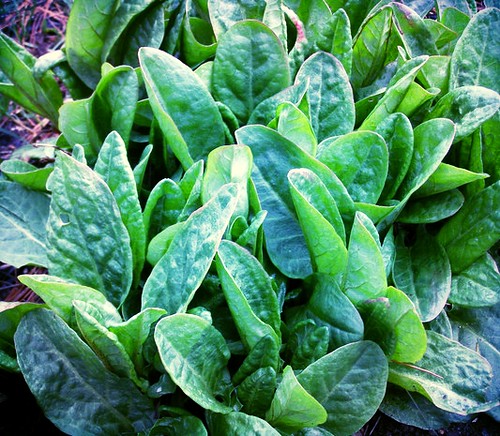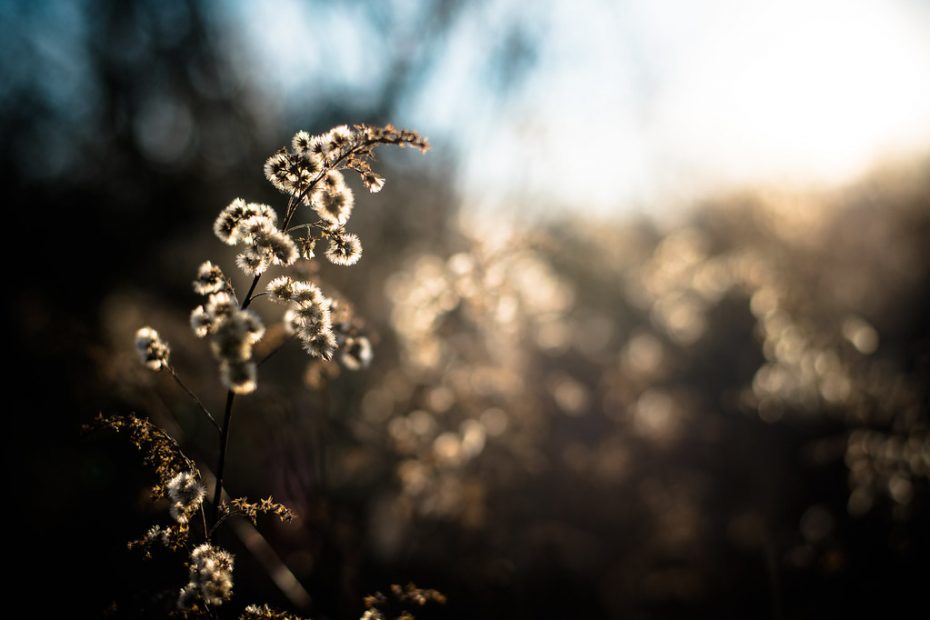When winter comes around and the first frost hit you might be worried about your herb garden. In some zones in the United States herbs in winter might not survive at all while they thrive in others. I was unsure myself if my herbs would survive so I did some research:
Chives, mint, oregano, sage, and thyme will survive winters in climates with an annual average low of -30° F. Caraway, catnip, horseradish, lemon balm, parsley, sorrel, and tarragon can also survive winter with an annual average temperature of -20° F.
In this article, we will examine whether herbs survive winter and go into details with regard to each herb’s constitution. I’ll also go over which herbs can survive frost and have included a list of herbs that are suited to grow back in frosty climates. Lastly, I’ll mention a few of my favorite tips for preparing your herb garden for winter to ensure survival!
Do herbs survive winter?
Chives, mint, oregano, sage, and thyme have a good chance of surviving winters. These hardy herbs have protective outside membranes that allow them repel most of the cold. In addition, there are efficient at consuming water so that no leftover liquids can freeze inside the herbs and cause damage to the leaves.
All in all, the question of whether herbs survive winter is one that depends on many factors such as the moisture and average annual low temperature. In order to better understand which herbs to plant where you live it can also be helpful to take a look at the different climate zones in the United States. I’ve written an extensive guide on using these zones to plant an herb garden which you can find here.
In order to examine winter survival of herbs in more detail let’s first take a look at the most winter-hardy herbs which can even do well covered in snow!
Herbs that survive winter
Herbs that will survive most winters in the northern hemisphere are chives, mint, oregano, sage, and thyme. As a general rule, these five herbs will survive winters anywhere where they naturally grow in summers.

- Chives: This grass-like herb does not have any broad leaves and thus less water stored inside. This makes it an excellent candidate for cold weather survival. Its lesser surface also gives it a bigger chance of making it through the snow to the surface and reaching the warm rays of the winter sun.
- Mint: Although mint is more closely associated with Middle Eastern tea culture its habitat extends as far north as Scandinavia. One of the mint’s biggest surprises is its versatility in terms of climate zones, doing well in warm Mediterranean weather while also thriving in cool sub-continental climate zones.
- Oregano: With its woody stems the tiny oregano leaves and branches are well-insulated against the cold winters of the northern zones. Despite its origins being in southern Europe, Oregano has managed to survive cold winters and has been even spotted as far up as Canada.
- Sage: The sage herb resembles more a hardy bush than fragile kitchen herbs. Its leaves are roughly textured and of a robust consistency making it especially stable against adverse weather conditions.
- Thyme: This herb is one of my personal favorites and won’t be amiss on any pizza before me. Lucky for me, thyme also survives frost and colder winter of climate zones in New England and the Mid-West. Its small leaves filter out water and resist freezing by drawing heat from the earth.
Now that we’ve established the five superhero herbs that will grow even in the coldest winters we’ll turn our attention to slightly more fragile herbs thta might survive frost but not prolonged periods of severe temperature drops.
Can herbs survive frost?
Many herbs such as caraway, catnip, horseradish, lemon balm, parsley, sorrel, and tarragon can survive a few days of frost before dying off. However, they will not survive prolonged time periods below the freezing point as the drop in temperature can make it impossible for them to get any nutrients from the soil.
Generally, climate zones with an annual average low temperature of around -20° F will be the lower limit for these herbs to survive. Since, first frost dates and length of frost vary by year your herbs garden might be more or less lucky depending on the yearly conditions.
Herbs that survive frost
The herbs listed below stand a good chance of surviving frost and either thriving all throughout winter or growing back the following spring with renewed vigor.

- Caraway: Caraway is mostly consumed for its seeds and finds frequent application in baking. As it is used in baking cultures around the world but especially in Austria and Germany it can deal with the frosty winters in those climate zones and will survive even some light snow.
- Catnip: Probably a cat’s favorite plant although not entirely cat-safe (read more about herbs that are safe for cats here) catnip is also frost-hardy in the sense that it can withstand a few days of temperatures below the freezing point. Much to the delight of your cat!
- Horseradish: More accustomed to warmer climates such as the sub-tropical zones of Japan horseradish is surprisingly winter-hardy and can survive up to two weeks covered in frost. Since its roots extend deep into the ground it is able to continuously gather nutrients even in frosty winters.
- Lemon balm: With its thicker branches lemon balm is ideally suited to repel some of the colds of frost and continue to grow much throughout the winters in the northern hemisphere.
- Parsley: One of the most essential kitchen herbs parsley has versatile applications and is just as versatile in outdoor temperature even surviving light frost. However, extended periods of time of greater than one week will likely damage the plant.
- Sorrel: Sorrel with its big leafy green leaves is related to grass plants and comes with natural resistance to cold temperatures and frost. It can go even for up to several weeks entirely covered in snow and still come out completely intact once the sun melts away the white ice.
- Tarragon: Tasty with chicken soup in winter tarragon can thankfully also be grown in winter! When the first frost hits and your pot of chicken soup are on the stove your tarragon will likely be right there with you.
The next big question we will tackle is whether you should leave your herbs outside in winter or consider replanting them to your indoors!
Can herbs stay outside in winter?
Generally, most winter-hardy herbs such as mint, oregano, and thyme can stay outside in winter. However, you might want to consider moving more delicate herbs like tarragon, parsley, and caraway indoors.
Leaving herbs outside in winter – Pros & Cons
- Habituation: One important factor to take into account when considering moving your herbs indoors is that these plants might not deal well with the sudden change in climate and atmosphere. I’ve had herbs do fantastically even in cold winters and frost just fold miserably into themselves once I had repotted them and set them on my kitchen window sill.
- Growth: However, once you have replanted your herbs and they have grown accustomed to their new environment they will likely grow a lot more than outside. The warm room temperature stimulates plant growth and when the herb’s leaves are not covered by snow or frost it will be able to synthesize much more sunlight for growth.
- Lifecycle: Another factor consider is the herb’s natural lifecycle. Perennial herbs are used to stay outside in winter and will usually grow back if left to their own devices. By replanting herbs indoors we are disrupting this seasonal cycle and might cause the plant to release its seeds prematurely or not at all.
Will herbs grow in winter?
Herbs left outside in winter will generally not grow much. It is common for perennial herbs to simply stagnate in the colder months as all the available energy is used to resist the cold outside temperatures and the frost.
Even indoors herbs will naturally grow a bit less in winters due to the cooler window sill temperatures and fewer sunlight hours during the day. The only way to have your herbs grow as steadily as possible all throughout winter is to use an artificial planting system with LED lights and a consistent room temperature.
Some herbs that I’ve found grow quite well in winter are actually chilis. Even though there has been little sun this season with many days below freezing my two chili plants have down surprisingly well!
How to prepare your herbs for winter
Of course, there are some measures we can take to help give our herb garden the biggest chance of survival through winter. The three most useful things you can do are to cover your herbs outside, take them indoors, and to cut them back in fall.

- Cover: Covering up your herbs outside will lead to a similar effect as produced by greenhouses. For this it is not necessary to buy any new equipment, instead use some large plastic containers to wrap around your individual herbal plants, and if necessary use some saran wrap to cover the top of the plant. Just make sure you leave enough room for oxygen to come in and carbon dioxide to escape.
- Indoors: The most obvious way to protect your herb in winter is to replant them and take them inside. When undertaking this make you you accustom your herbs to the new conditions slowly and steadily. It is recommended to use at least some of the same soil present in your garden. Also, don’t over-water your herb garden once moved inside but give your plants some time to breathe and place their roots in their new home.
- Cut back: Cutting back herbs for winter can actually be very beneficial to the plant’s health and overall growth come the next year. Especially removing dead leaves and branches will allow the herb to direct all available nutrients to the most essential plant parts. Make sure to use clean and sharp garden shears and leave at 2-3 weeks times between the cutting and the first frost. For more information about cutting backs herbs in the fall, check out this comprehensive article I wrote last month.
Conclusion
With just the right care most herbs will indeed survive the winter months. Very hardy herbs such as oregano, thyme, sage, mint, and chives can be left to their own devices as they will deal just fine with the cold and may even use the season to build stronger roots for the next winter.
Other slightly more delicate herbs like caraway, catnip, horseradish, lemon balm, parsley, sorrel, and tarragon require a little more care and can benefit from being cut back in fall or even being covers for a greenhouse-like effect.
Any other herbs not listed above will likely need to be placed indoors during the winter months replanted the following spring. If your perennial herbs managed to spread their seeds wide enough in fertile soil you might even see some herbs reappearing in spring. In that case, this particular has not survived winter, but its offspring did!
“Winter plant reaching for the sun” by Agent Smith is licensed under CC BY-NC 2.0; “Chive” by Bitter Jeweler is licensed under CC BY-NC 2.0; “Return of the Sorrel” by Melinda Young Stuart is licensed under CC BY-NC-ND 2.0; “Salvaging some of our herbs indoors” by beedubz is licensed under CC BY-NC-SA 2.0
- Are Herbs Perennial? - January 29, 2021
- Can Herbs Survive Winter? - January 28, 2021
- Can Dogs Eat Herbs? - January 27, 2021
